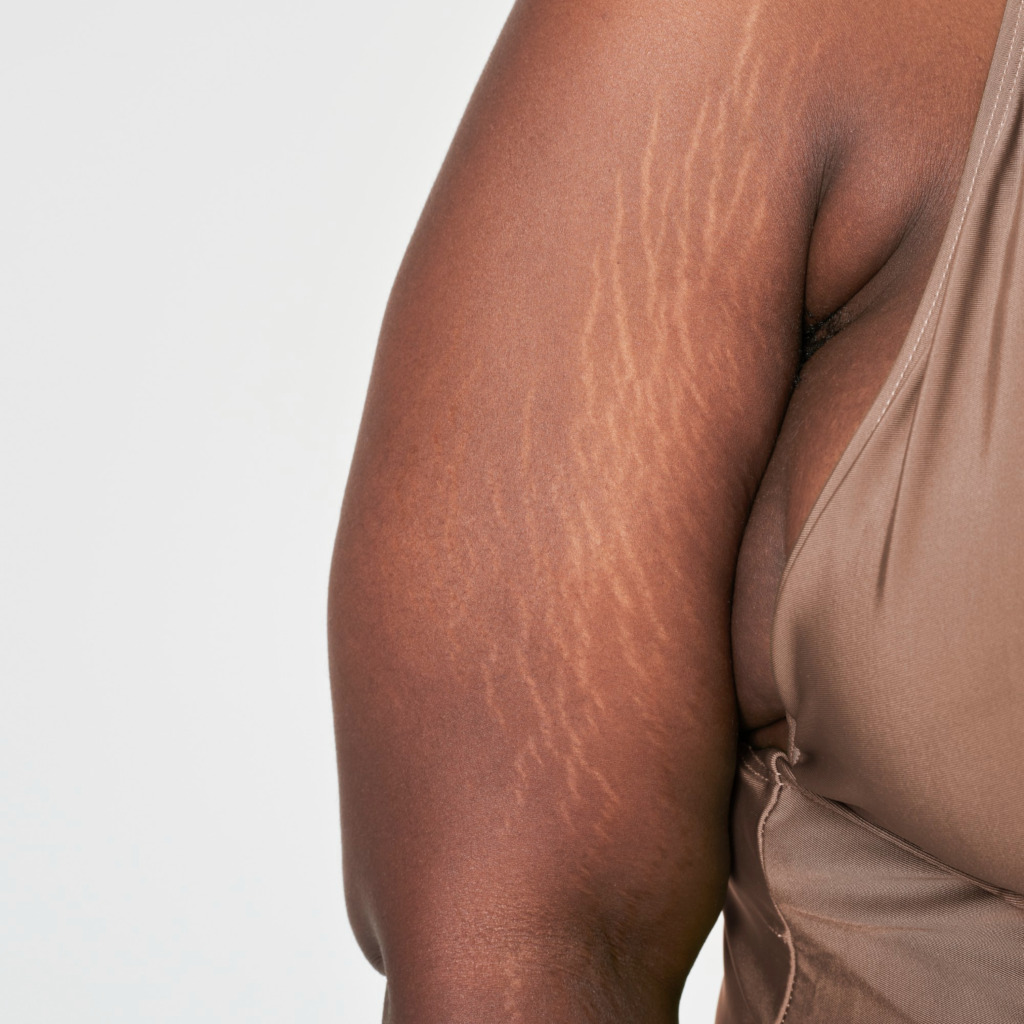It’s a wonderful journey to lose weight because it changes the body and offers many health advantages. But one thing that many people who are losing weight worry about is the possibility of how to avoid loose skin after weight loss. Achieving your desired results while maintaining healthy skin elasticity requires knowing how to prevent or minimize loose skin after weight loss.
Is it possible to stop having loose skin after weight loss? One thing that people wonder about before starting a weight loss journey is that. The favorable tidings? A way exists. While it may not always be possible to prevent loose skin following a significant weight loss, there are a number of actions and methods that can help.

Understanding Loose Skin After Weight Loss
A person who loses a lot of weight frequently develops loose skin because their skin is less elastic and cannot adjust to the new contours of their body. It is important to recognize that this phenomenon is caused by a variety of factors.
Factors Contributing To Loose Skin
Age And Elasticity: As we age, our skin becomes less elastic, which reduces its propensity to rebound from weight loss.
Weight Loss Amount And Rate: Excessive or rapid weight loss can cause loose skin because the skin won’t have enough time to adapt to the body’s changes.
Genetics And Body Composition: Both genetics and a person’s physical composition—including their level of muscle mass and collagen—have an impact.
Adopting healthy weight loss strategies is essential to reducing loose skin.
How To Avoid Loose Skin After Weight Loss
- Gradual Weight Loss: Setting up a gradual approach as your top priority is crucial when starting a weight loss journey. Aim to lose 1 to 2 pounds every week consistently. The skin can gradually adapt to the changes in body composition at this slow pace. Skin strain from rapid weight loss increases the risk of loose or sagging skin. You can encourage your skin’s natural elasticity and lessen the likelihood of excessive sagging by allowing it time to adjust.
- Exercise And Strength Training: The secret to battling loose skin is incorporating strength training exercises into your exercise regimen. Gaining muscle through strength and resistance training fills the void left by fat loss. Your muscles give the skin underlying support as you tone and strengthen them, giving the skin a firmer appearance. Exercises that target specific muscle groups, such as bodyweight exercises, resistance training, and weightlifting, help to minimize loose skin and help to tone the body.
- Sufficient Hydration And Diet: Nutrition and hydration are essential for keeping healthy skin while losing weight. Maintaining adequate hydration keeps skin resilient and supple, which enhances elasticity. Maintaining the health of your skin and eliminating toxins can both be achieved by drinking enough water each day. It’s also critical to concentrate on eating a balanced diet full of vitamins, minerals, and antioxidants. Nutrient-dense foods that promote skin health include fruits, vegetables, lean meats, and healthy fats. Minerals like zinc and selenium, as well as vitamins A, C, and E, support the elasticity and repair of skin.
Nevertheless, maintaining skin elasticity also requires alterations to lifestyle that go beyond weight loss strategies. By integrating these healthy weight loss strategies into your routine, you not only promote overall well-being but also support your skin’s ability to adapt to changes, minimizing the occurrence of loose skin.

Lifestyle Adjustments For Skin Elasticity
- Skincare Routine: Consistently moisturize the skin and take into account elasticity-promoting firming creams or lotions.
- Including Collagen-Boosting Foods: Eat foods high in nutrients that promote collagen, such as fish, bone broth, and leafy greens.
- Sun Protection Is Important: Protecting the Skin from Dangerous UV Rays Helps Prevent Future Skin Damage or sagging.
In cases where loose skin persists, there are both surgical and non-surgical options available.
Options, Both Surgical And Non-Surgical
- Surgical Techniques For Tightening Skin: It is crucial to speak with a licensed dermatologist or plastic surgeon when considering skin tightening options. They can help you navigate surgical procedures designed to effectively address loose skin. Surgical methods for skin removal or body contouring are frequently taken into consideration. Body contouring is the process of reshaping and toning particular body parts, whereas skin removal surgeries are intended to remove extra skin, especially after a substantial weight loss. These surgical procedures can yield amazing body-sculpting and tightening effects, but they come with potential risks and a recovery period that should be fully discussed with a healthcare provider.
- Non-Invasive Therapies And Treatments: On the other hand, non-invasive methods provide less invasive ways to tighten your skin. Popular non-surgical techniques include radiofrequency treatments and laser therapy. Targeted light energy is used in laser therapy to increase the production of collagen, resulting in skin that appears tighter and younger. In a similar vein, radiofrequency treatments tighten loose skin by stimulating collagen synthesis with controlled heat. When compared to surgical procedures, these non-invasive therapies usually involve less downtime and are less invasive. However, individual responses to these treatments can differ, and multiple sessions may be required to achieve desired results.
Recall that the journey’s psychological component is just as significant.
Acceptance And Mentality
- Accepting The Journey: Accept the changes and see your increased skin as a sign of your success rather than a setback.
- Putting The Focus On Overall Health And Well-Being: Give general health and wellbeing more weight than obtaining a particular body image.
Conclusion
While loose skin after weight loss can be concerning, implementing a combination of healthy weight loss strategies, lifestyle changes, and acceptance can significantly reduce its occurrence and impact. Embrace your journey, celebrate your achievements, and prioritize overall health and wellness.
FAQs
Q1: Does age play a significant role in loose skin after weight loss?
Ans: Age does influence skin elasticity. Generally, older individuals might experience more challenges with skin retraction due to decreased collagen and elastin production, which are essential for skin elasticity.
Q2: Are there any specific exercises that help prevent loose skin?
Ans: Incorporating strength training exercises can be beneficial. These exercises build muscle, which can help fill out loose skin and improve its appearance.
Q3: Can creams or lotions truly help tighten loose skin?
Ans: While certain creams and lotions claim to improve skin elasticity, their effectiveness varies. Look for products containing retinoids, hyaluronic acid, or collagen-boosting ingredients for potential benefits.
Q4: How long does it take for skin elasticity to improve after weight loss?
Ans: Skin elasticity improvement varies for each individual. It can take several months to years for the skin to adjust to the body’s new shape, depending on factors like age, genetics, and skincare routines.
Q5: What are the risks associated with surgical procedures for skin tightening?
Ans: Surgical procedures, while effective, carry risks like infection, scarring, and anesthesia-related complications. It’s crucial to consult with a qualified healthcare professional to understand these risks thoroughly.
The journey of weight loss is an incredible achievement, and addressing loose skin is part of this transformative process. By adopting a holistic approach that encompasses lifestyle changes, healthy habits, and a positive mindset, individuals can navigate this aspect of their journey with confidence and grace.




